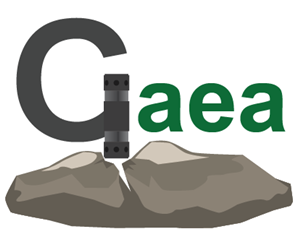What material are rock drill rods made of
Introduction to Drill Rods
The drill rod is a critical component of rock drilling equipment, serving as the link between the drill bit and the shank adapter. It plays a vital role in transferring impact energy from the rock drill to the drill bit, as well as conveying rotational torque and flushing medium during the drilling process. Given the demanding conditions under which drill rods operate, understanding their materials, dimensions, and weights is essential for optimizing drilling performance.
1. Material of the Drill Rod
Drill rods are primarily made from high-strength steel, which is essential for withstanding the intense stress and impact forces encountered during rock drilling. The performance characteristics of these rods can be enhanced by adjusting the chemical composition of the steel. Key elements include:
Carbon: Increases hardness and strength.
Chromium: Improves corrosion resistance and hardness.
Molybdenum: Enhances toughness and strength at high temperatures.
Nickel: Improves toughness and impact resistance.
Based on the varying proportions of these elements, drill rods can be classified into different types of steel, such as carbon steel, silicon manganese steel, chromium steel, and silicon manganese molybdenum steel. The manganese content, for instance, significantly influences the toughness and tensile strength of the drill rod, while silicon affects the yield strength and simplifies the production process.

2. Classification of Drill Rods
Drill rods can be categorized based on their connection methods, which include:
Tapered Connection Drill Rods: Typically used for shallow drilling applications. The connection involves a tapered end that fits into the drill bit. While this method allows for quick assembly, it is prone to disconnection during operation, requiring more maintenance.
Threaded Connection Drill Rods: More suitable for deep hole drilling, these rods feature male threads on one end and female threads on a connecting sleeve. This allows multiple rods to be connected as drilling progresses deeper. However, the increased connection length can lead to a higher risk of breakage, and the manufacturing process is more complex, resulting in a higher cost.
3. Dimensions and Weights of Drill Rods
The dimensions and weights of drill rods vary significantly depending on their specific model and application. Commonly used models include:
B19 Drill Rod: Thread connection specification of 1/2-12M14*1.5, with lengths ranging from 0.4 to 2.8 meters and a weight of approximately 2.26 kg/m.
B22 Drill Rod: Thread specifications include M142 or M162, available in lengths of 1, 1.5, and 2 meters. The weight is around 3.06 kg/m, and lengths typically do not exceed 3 meters.
B25 Drill Rod: This rod has a diameter of 25 mm and a taper of 7, with customizable lengths from 0.3 to 10 meters. The weight is approximately 3.96 kg/m.
These variations in dimensions and weights are essential for matching the drill rod to specific rock drilling equipment and ensuring optimal performance.
Conclusion
In summary, rock drill rods are primarily made from high-strength steel, with their material properties tailored to meet the rigorous demands of drilling applications. The dimensions and weights of these drill rods can vary significantly based on their model specifications, making it crucial to select the appropriate type for your specific drilling needs. By understanding the materials and characteristics of DTH pipes and drill rods, operators can enhance the efficiency and effectiveness of their drilling operations. Whether you are using a drill bit for shallow or deep drilling, selecting the right drill rod is vital for successful rock drilling endeavors.





